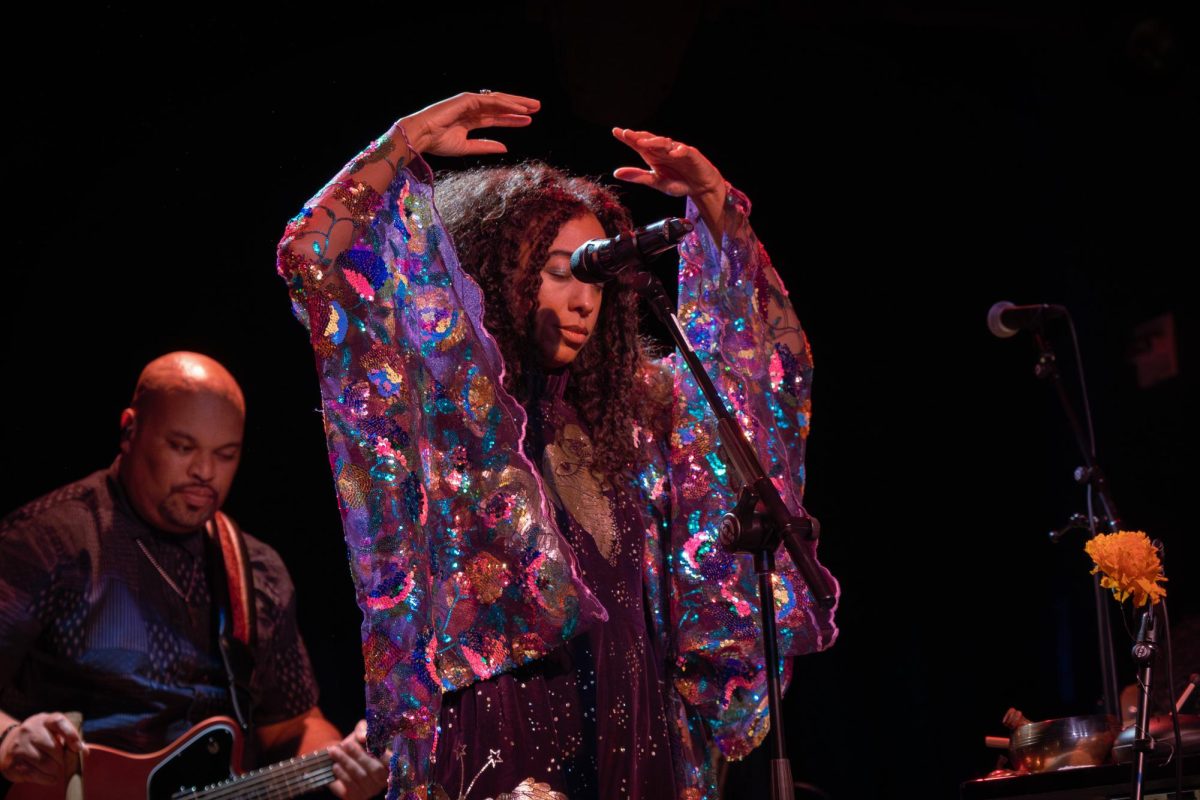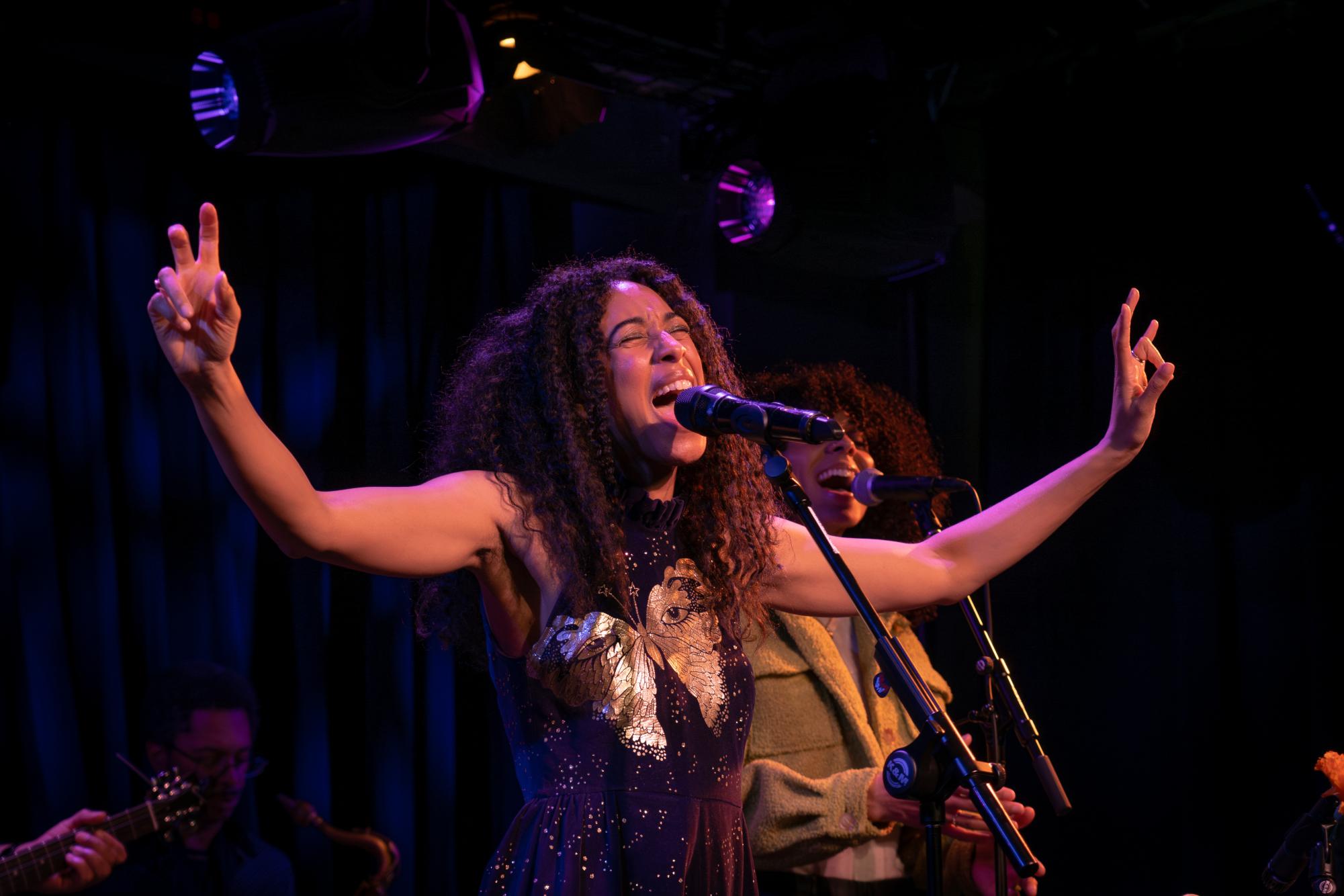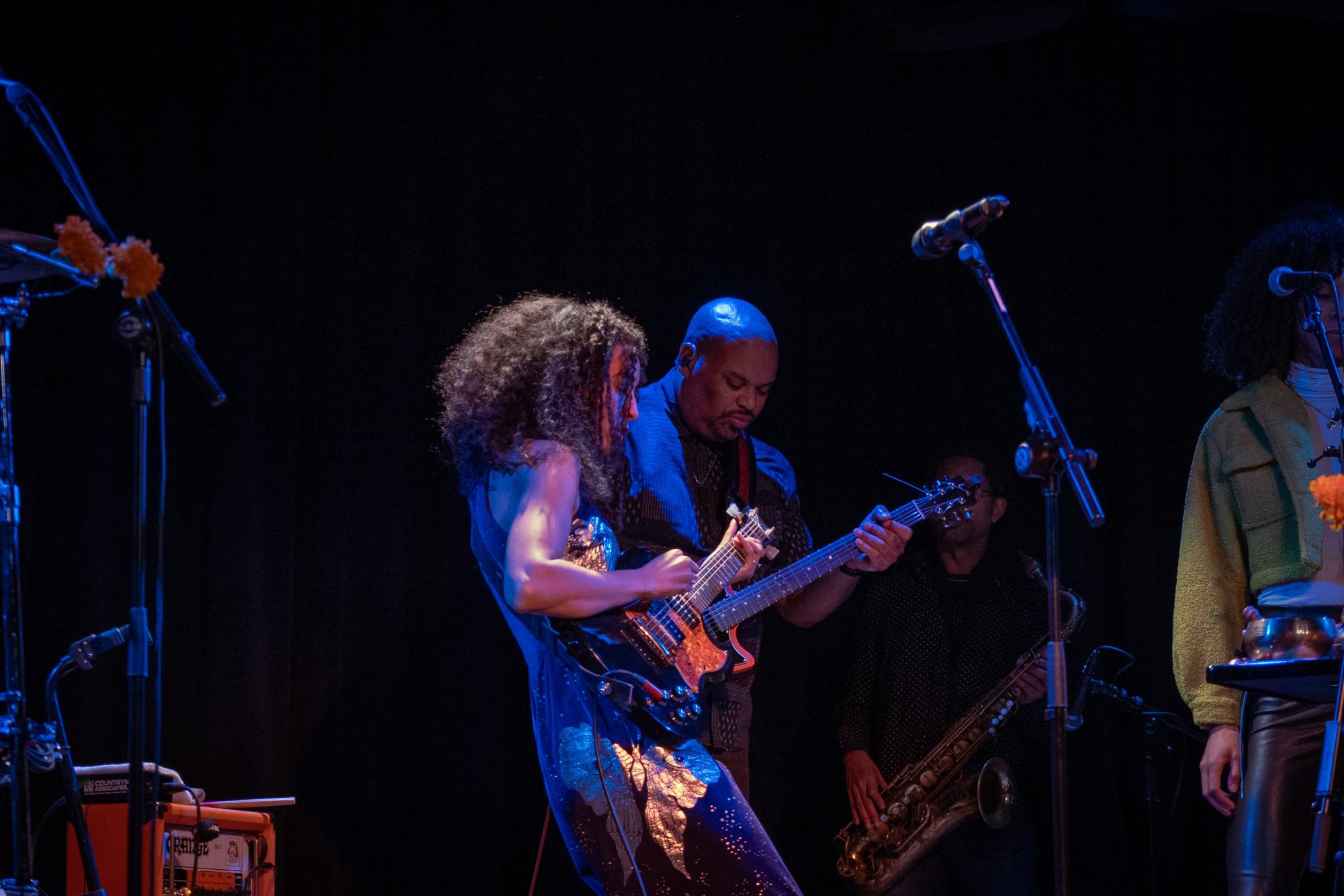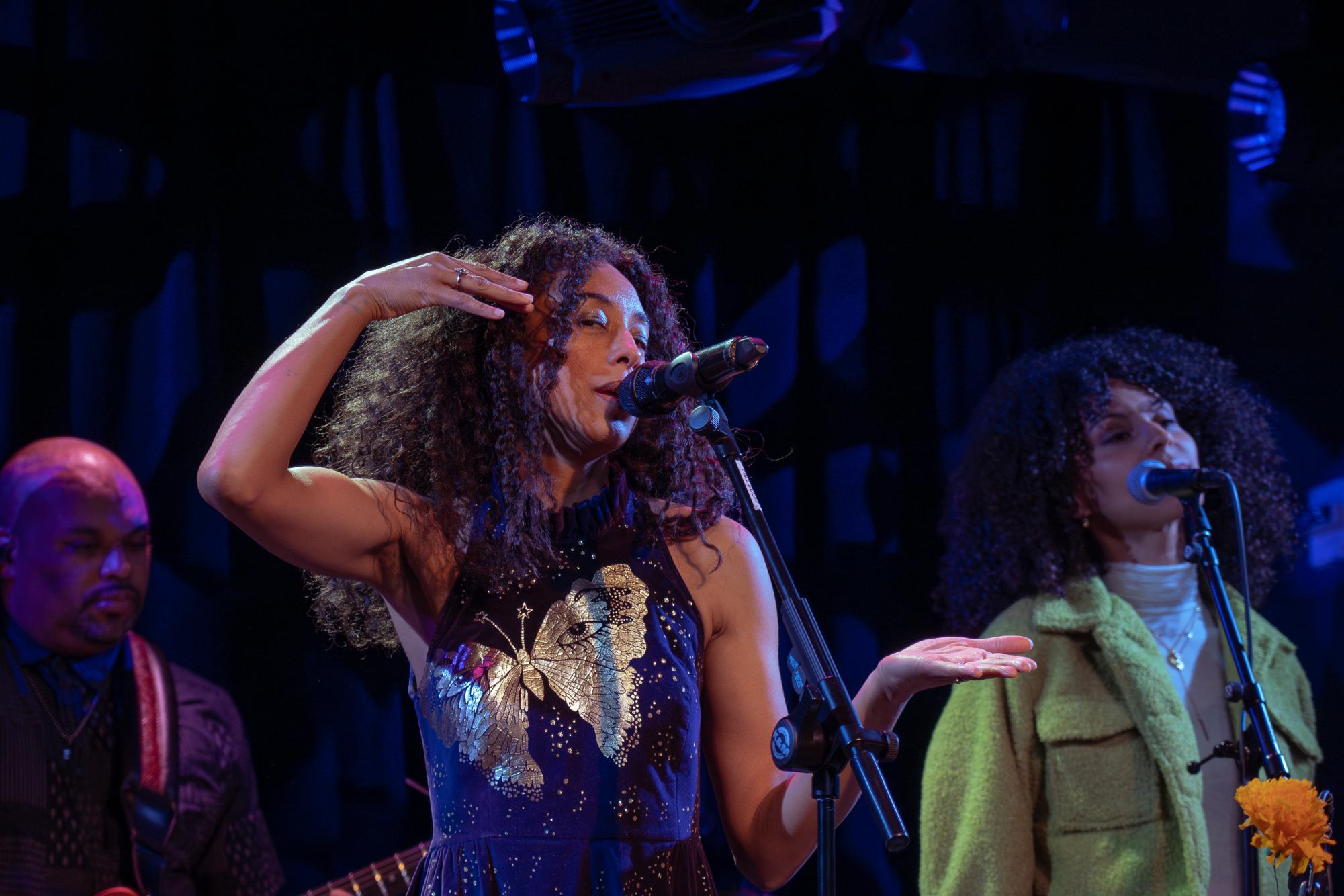Two-time Grammy Award winner Corinne Bailey Rae recently began her first-ever artist residency at NYU’s Clive Davis Institute of Recorded Music, spotlighting her newest album, “Black Rainbows.”
Bailey Rae’s album explores everything under the sun: ancestry, spell work, inner and outer space, a return to Black femininity, the erasure of Black childhood and music as a means to transcendence. It draws inspiration from Chicago’s Stony Island Arts Bank — a hybrid gallery, media archive, library and community center. The Arts Bank features the archives and collection that belong to Rebuild Foundation, a community-based, artist-led platform for art, cultural advancement and regeneration of neighborhoods. Rae spent years researching this bank and spending time with its books, artworks and antiques to serve as the inspiration behind the album.
When Bailey Rae performed at the Black Artists Retreat at the Stony Island Arts Bank in 2017, it was one of the turning points in her road to “Black Rainbows.” Immersion in the tactile world of artifacts, from modern artworks to scores of songs composed during the era of slavery, was a life-changing event for her.
“I found when I was looking around at these objects and holding them that they were talking to me, that they were visiting with life,” Bailey Rae said at a recent Q&A with NYU Recorded Music students. “When I left, I just couldn’t stop thinking about them and their stories.”
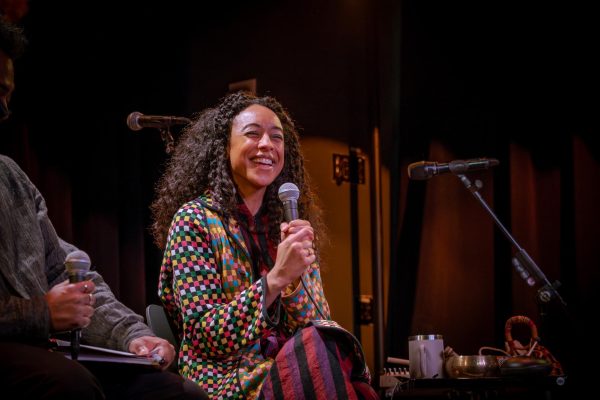
Throughout her residency, Bailey Rae shared her experiences with the industry during student workshops, focusing on the concepts of artist development and transformation.
“It’s almost as though in those years between slavery and civil rights that Black people didn’t exist, because I hadn’t seen a lot of imagery for all the different reasons,” Bailey Rae said.
Bailey Rae’s residence went beyond her personal artistic trajectory — her goal was to motivate Clive Davis students. Nick Sansano, chair of the Clive Davis Institute, said the residency “offers important historical references, and will encourage students to dig further and make their own discoveries,” which Bailey Rae’s all-encompassing approach to artistic expression delivered on that promise.
The idea of transformation and redemption is fundamental to the album’s story, reflecting an overall creative philosophy of salvation for the Black diaspora. It intertwines tales of resiliency, like in “Erasure” where she discusses Black childhood, with cultural heritage, in songs like “He Will Follow You With His Eyes” and “Before The Throne Of The Invisible God.”
The album also offers a moving analysis of how people are portrayed in both music and society. Bailey Rae explores issues of inclusivity, beauty and identity through personal tales and historical allusions. “Black Rainbows” becomes a potent monument to the complex nature of Black identity, addressing issues ranging from the death of representation in rock music to the significance of visual representation in Black history. Her prominence as a Black artist, combined with her soul-pop sound, helps Bailey Rae poignantly address all of these issues.

Bailey Rae specifically reflected on how an unknown photograph of a young girl listening to rock music for the first time inspired her song, “New York Transit Queen.”
“You know, it’s probably the first time she’s heard this music, and it’s just exploding her tiny mind,” said Bailey Rae. “And it made me think of myself as not just a maker of guitar music, but someone who really loves that music.”
The highlight of Bailey Rae’s residency was a student-only concert at NYU’s performance space The Garage, where she brought the heartfelt tunes of “Black Rainbows” to life. The album also serves as a reminder of the ability of art to cross barriers, start discussions and effect change.
“I think I definitely found a lot of freedom in being aware of this Black, abstract art movement that I hadn’t known about,” she said.
Contact Molly Koch at [email protected].


























































































































































